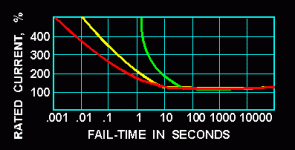There's another facet to the sizing of "protection" that is often misunderstood. A fuse or breaker sized to protect a load rarely protects the load in the sense that it prevents the motor / light / heating element from going bad. On occasion, a motor may be protected in an overload event, but the fuse or breaker most often blows or trips after the load already took a crap. It is common to have 15, 20 or larger amp protection on circuits that normally see a fraction of that current.
For protection of motors, the common method is to either have built-in thermal protection or a motor starter with same. Fuses and breakers are there primarily for short circuit (wire) protection. There are not enough sizes of fuses available for proper protection of loads. Thermal elements for a motor starters, especially for smaller motors, have ranges like 3.56A to 3.95A, 3.96A to 4.23A, etc. They don't jump in 1,5 or 10A increments.
For lighting and power circuits, it is not uncommon to have wiring connected to the circuit that would be considered undersized for the circuit's fuse or breaker. Two examples are a fluroescent light - they have 18ga wires for the line side of a
ballast, but are connected to 15A circuits in a residence (larger circuits in commercial applications). Another is the circuit your computer is plugged into. At home, you have 15 and 20 amp circuits, depending mostly on the room you're in. The electrician has no idea what you will come along and plug in. There are requirements for circuits in different living spaces, but they do not address protection of devices you come along and connect. If you plug a radio or clock or table lamp into a 20 amp circuit in your kitchen, the fuse or breaker has no way of knowing it's not the coffee pot. The load you plugged in may need less than an amp to operate properly, have some kind of internal problem, and draw 12 amps and smoke. Meanwhile, the breaker assumes all is well because that current well below its max................chim
